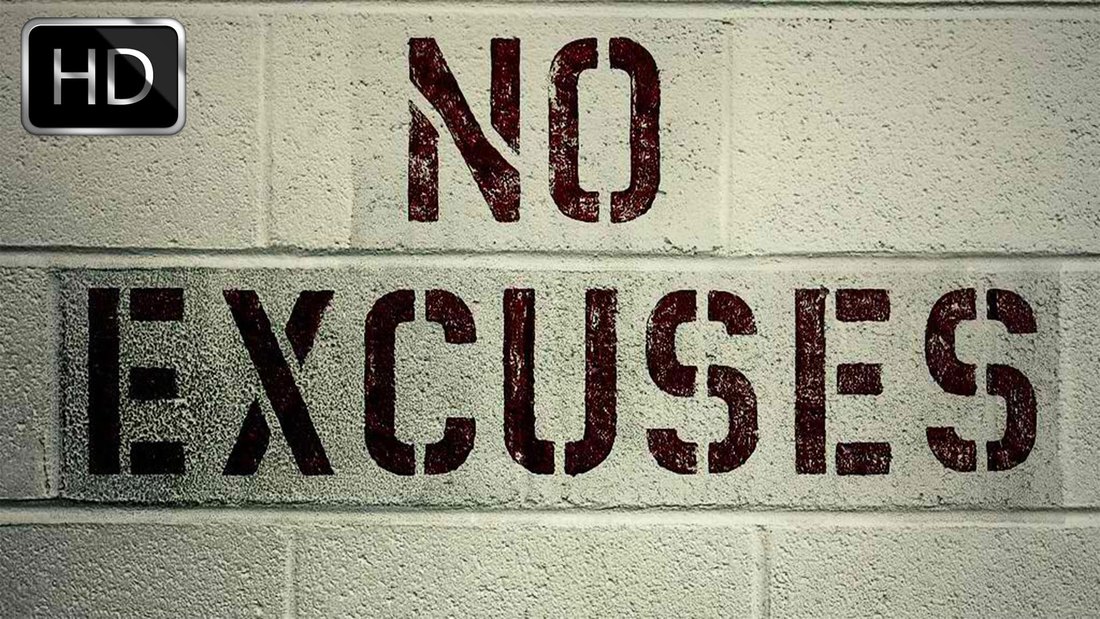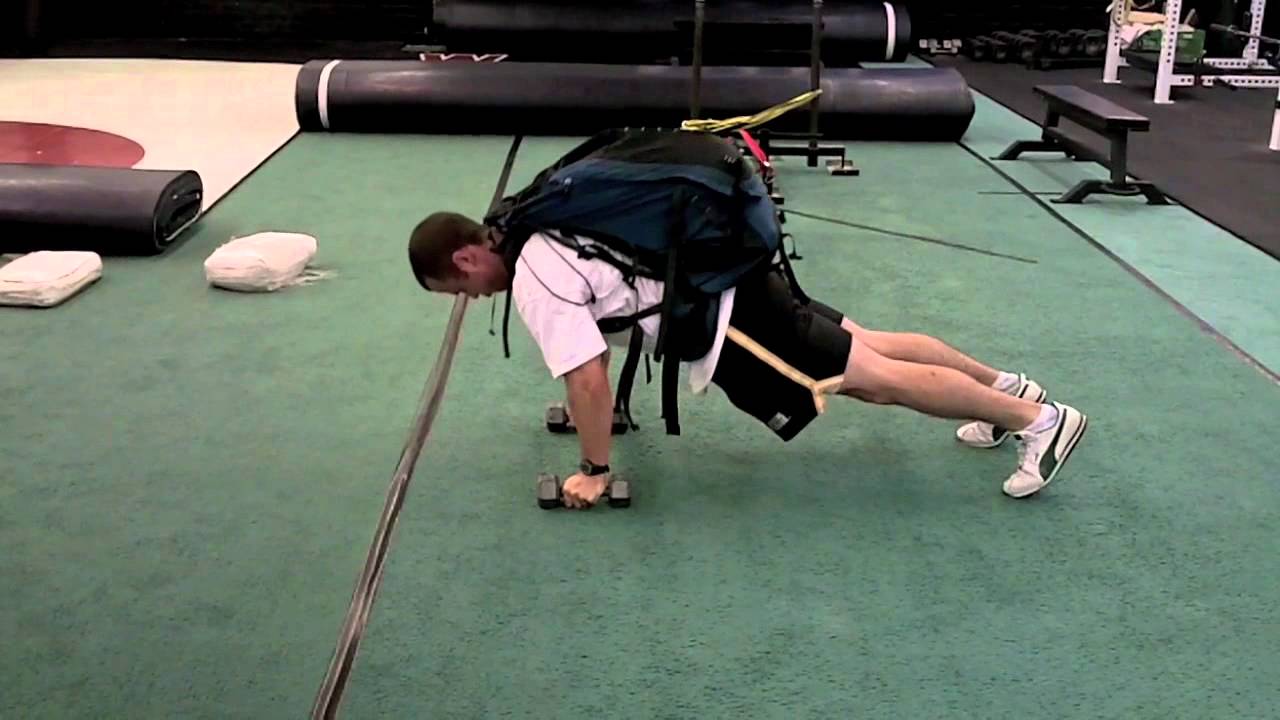|
PART 1 "I don’t have the time to exercise." "I don’t have the money." "I look fat and people at the gym will laugh at me." "I’m uncoordinated." "I have too many obligations." "I’m too tired." "My knee/elbow/shoulder/back/etc hurts." "My wife/husband/kids/job/parents/etc put too many demands on me!" Sound familiar? Believe me, I understand it and I’m going to give you some helpful practical tips on how to incorporate exercise into your daily life. In doing this, I am unfortunately going to call you out on most of your excuses, and you’ll have no choice but to start exercising more and start enjoying the resulting physical and mental health benefits. My job as a trainer isn't to make you feel better by telling you what you want to hear. It's getting you results by calling you out on your bullshit. Your family, your friends, your boss, your colleagues and YOU will all be much happier for it. Let me tell you the story of a client I met during my time living in Tenerife to put this article into perspective. John is 50 now and generally speaking, he has never felt better. However 7 years ago, it was a different story. At 43, he felt himself slide downhill quickly. He had a “big job”. He ran a business with 65 employees in 6 countries. Half of his time was spent travelling across multiple time zones and continents. He worked a minimum of 60 hrs a week. He lived in a very expensive city. He had a massive mortgage and enormous bills to pay. He had 3 children who were 3, 5, and 7 yrs old. He and his wife had no family infrastructure around to support them, so it was pretty full on at home. He was drinking too much, not exercising enough, developing an unflattering dad-bod and just started to feel old, stiff, and out of shape. Here’s what he did: He made his mental and physical health his #1 priority. Yes, he had a family and yes, had dozens of employees to look after, and yes, there were a lot of competing obligations and pressures to manage. He needed to operate at full throttle all the time, and if he couldn’t, he was failing either his colleagues or his family. So how could he possibly take the time to “indulge himself” in the “selfish pursuit” of exercise with all these demands on his time? Rather than viewing his workout time as a luxury, he viewed it as a core responsibility integral to his success and happiness at home and at work. He made exercise a non-negotiable ritual, just like brushing your teeth twice a day - You don't really think about it, you just do it! As the sole breadwinner in the family, his requirement to stay fit and healthy and maintain his ability to perform at maximum output was vital, and exercise became a facilitator of peak performance. Exercise kept him:
He made a point of carving out time early in the morning and adjusted the rest of his day accordingly. 6am 3 to 5 days per week. He was mentally prepared, physically energised, ready to tackle it every day. During the week, he could still be home by 8am to take his children to school, or on the weekends when he could go for a long bike ride, he was still home by 10am to join up with whatever super organised, overly scheduled family mayhem was planned. Your possible excuses for not doing what he did:
Get creative and find a way to squeeze it in: On days/weeks where he couldn’t get a “real workout” because his hotel didn’t have a gym, or the weather was terrible, or he had family commitments, he had to improvise. Possible excuses for not working out while travelling or during busy weekends:
There is a whole range of bodyweight routines that you could do, so go on YouTube and search 'body weight exercises' and given them a try. Every hotel room has enough floor space for you to do press-ups, planks, lunges and squats and you can do them in your underwear at any time of the day or night. It makes no difference what you look like or what you're wearing, so no excuses.
None of that sound appealing? Don’t worry because I’ve still got you covered. Rather than walking, drive your child to their party and with the spare 45 minutes before the next obligation starts flashing on your phone don’t chit-chat with all the other parents or get a cappuccino and a piece of carrot cake at a local cafe and fiddle with your phone. Go out and sprint...or even just go back into the car and take a nap. Don’t feel guilty about taking a nap either. Chances are, not only do you need more exercise, you probably need to sleep more too. If you’re lucky, and your over-scheduled weekend obligations all follow the same pattern, i.e. at 10am you need to be here and at noon you need to be there and at 2pm you need to be wherever.. I am extraordinarily confident that somewhere along the way, there is a park or a trail (where you can sprint, do a HIIT bodyweight workout, stretch, use the playground for pull ups, leg raises etc) Or there is a gym (where you can get a full or casual membership or a day pass to use on weekends), a swimming pool, a big set of stairs or a big hill that you can walk up and down a few times and get your heart and legs pumping. Stairs, hills, parks, and trails are all FREE and require no special equipment, so no excuses. If you are motivated, there is a way that you can shoehorn some exercise in all of those blocks of downtime...even if it’s only 30 minutes here and 30 minutes there, you can grab an hour’s worth of activity. While none of my suggestions above are a replacement for a proper tailored workout and nutrition program, they are certainly a step in the right direction to get you moving towards a healthy, active lifestyle.
PART 2 In Part 1, I gave you several ways you can include exercise into your busy schedule and enjoy the numerous mental and physical health benefits that even a brief workout will provide. My suggestions were woven into a story, while in this part, I’m going to give you a list of options for home-based workouts, or squeezing some exercise into a packed timetable while you’re "on the go". No gym membership is required, and I’m also including a “low budget” option, so that you have no excuses for not exercising. Get a good rucksack: Why are you carrying a rucksack? Very simply, it’s added resistance that helps strengthen your legs and core. If you only have 30 minutes to go for a walk in between obligations, you’re better off walking up and down a hill carrying a backpack than simply taking a casual flat stroll in the park. What to buy: Get something that’s at least 20 litres but you don’t need anything larger than 40 litres. Make sure it has a rigid internal frame because you want the bag to have a stiff back and maintain its shape. Make sure the bag fits you well and is comfortable. As much as everyone loves to shop via Amazon, please go to your local outdoor retail store to ensure you try before you buy and get a good fit. What you’re going to do with it: Firstly, you’re going to put some weight in it and go for a walk. How much weight? It obviously depends on your level of fitness and the size of your bag, but anything from a couple of extra kilos up to a maximum of 25% of your body weight. (And if you think 25% of your body weight is too heavy, the armed forces personnel carry 45kg + in the desert or tropical heat, while trying not to get killed.) You can use anything as weight in your bag, just as long as it’s not going to move around or poke you. Add more weight (a couple of kilos at a time) as you get stronger. The other reason to carry a rucksack is that it’s your personal portable weight room, and here’s what you can do: While wearing the rucksack, you can do squats, lunges, good mornings, planks, calf raises, pull ups, press-ups, etc. Obviously, depending on the size of your bag, you may have some range of motion restrictions, but you get the idea. You don’t need a garage full of weights or a gym membership...you need a rucksack and some bags of flour. Use the bag’s weight instead of a barbell or dumbbell. Take the bag off and hold it above your head and do your squats, lunges or calf-raises. Too easy? Hold the pack over your head with one arm. Bend at the hips, put the bag flat on the ground and use if for bent-over rows. You can use the pack weight for single or double armed overhead/military presses. Extend your arms straight out in front of you and see how long you can hold the bag. Too easy? Do it with one arm. The combination of walking with the extra weight on your back and using the bag weight as a portable gym means you can enjoy a killer workout..anywhere, anytime. Leave the rucksack packed and bring it with you every time you leave the house, so you have no excuses for not squeezing some exercise into your day. Low-budget option: Easy. Buy a used rucksack and proceed as above. The lowest budget option is to just go to your local garden centre or hardware store and get sacks of dirt or sand or gravel or whatever is cheapest. You can adjust your grip on the bag depending on the exercise, but for probably £5, those 2 sandbags will give you an amazing workout. Use them for farmer’s walks, lunges, squats, deadlifts, curls, overhead presses, bent over rows, etc. As you get stronger, you can easily add more weight to the bags. I'm sorry, but money is not an excuse, because for as little as £5 you can have a portable set of adjustable dumbbells and for a maximum of probably £150, you have a quality backpack/multi-gym. If you feel a bit self-conscious hoisting this stuff around in your local park/beach/trail/playground, you can either take your rucksack or sandbags into your living room and/or go with Plan B. Plan B: a Bosu Ball or wobble board I think they’re great. You’re working out in your own home, so who cares what anyone else thinks? In my opinion, they’re probably one of the best piece of home gym equipment because of their incredible versatility (and yes, you can buy this one from Amazon). A Bosu ball’s inherent instability makes every movement more challenging and there are dozens of ways you can use them in your home-based workout. They’re unstable, so if you have balance issues, please be careful. Most of my training prescribes some form of HIIT (High-Intensity Interval Training) because of its scientifically proven ability to build muscle and burn fat faster than lower intensity exercises. Here are 2 exercises to include in your HIIT workout at the speed appropriate for your fitness levels (after you’re appropriately warmed-up). With the Bosu platform up (i.e. round side down), stand on the platform and do as many bodyweight squats as you can during the timed interval (say 20 seconds). During your timed rest interval (say 10 seconds), get off the ball, get in the press-up position, hold the Bosu by the edge of the platform and do as many press ups as possible during your timed exercise interval (20 secs), rest (10 secs), and repeat the cycle for a total of 8 sets. If you adhere to that time, you will have endured 8 minutes of HIIT, plus say another 10 minutes of a warm-up and a quick post HIIT stretch. I guarantee you that after those 18 minutes you’ll feel great and if you can do that 3-5x per week you'll be on your way to a fitter, healthier lifestyle and will start to notice a difference in your physique and overall fitness level. Please don’t tell me that you don’t have 18 minutes 3x per week to exercise in your living room because frankly, that’s bullshit. Get up 20 minutes earlier and do it before work. Fiddle with your phone for 20 minutes less each day. Watch TV for 20 minutes less each day. 20 minutes! Sorry...no excuses. Some other ideas for your Bosu ball home work out: To increase the intensity of the squats, hold some weights at your side or over your head...or you can wear your rucksack. If you don’t have weights or a rucksack, you can use water bottles, a box of “something” held in front of you or over your head or two shopping bags of “stuff” held at your sides or over your head. Flip the Bosu over so the flat platform is on the floor and the round part is up. Put your forearms on the round part and hold yourself in a plank position for 60 secs or as long as you can. Bosu planks are challenging and there are lots of variations to increase the intensity. Stand up and do alternating deep lunges with your forward foot landing on top of the ball. Sit down with your bum on top of the ball, hold your arms and legs out straight in front of you and hold a V-shape for as long as you can. If you’re really just starting out with your fitness or recovering from an injury, or even during your rest days, simply try standing on the Bosu ball (either side) for 30 minutes while you watch the news or your favourite TV show. First of all, we all sit too much. Secondly, you’ll be amazed out how many little adjustments your body will need to make during a 30-minute standing session on an unstable surface. If standing gets too easy, hold yourself in a ¼ squat for 30-60 second intervals. If you have time to watch TV, you have no excuse not to do this. Budget option: If you can’t buy a Bosu ball, no problem. I’m making the assumption that you have 2 legs (and please forgive me if you do not!). You can do your entire home work out on one leg, with your eyes closed. Why? On one leg with no visual reference points your balance is completely out of whack and a simple, single joint movement becomes a full body workout. Don’t believe me? Stand up, grab a bottle of water or something that has some weight to it and do single arm biceps curl. Easy, right? Now stand on one leg, close your eyes and do the same biceps curl. Immensely different experience isn’t it? So the next time you are watching TV, or standing in your kitchen...stand on one leg and close your eyes to increase the difficulty. You will definitely feel it in your legs and core the next day. There is no extra time and absolutely no cost for doing this, so no excuses. My knees/shoulder/back hurts! The only excuse I haven’t covered yet is injury, which I’ll briefly discuss now. As an avid sports participant, I have had my share of damaged joints, bones, muscle, and flesh. If you are motivated, are not in a full body cast, and not on a respirator, there is usually a way to work around your injury. If you have a lower body injury, work on your upper body only. Have an upper body injury? Work on your lower body. Unless you have a spinal or rib injury, you can usually find some variation of plank that will allow you to create tension in your body. TUT (Time Under Tension) is an important variable in creating an effective workout, and planks are usually safe and effective for everyone because they are an incredibly powerful full body exercise that actually requires no movement. You can increase the intensity of your planks by simply squeezing every muscle in your body HARD from your toes right up to your neck. By squeezing each muscle group separately, you increase the mind-muscle connection, a skill which helps you in all your workouts. Obviously, increasing the duration of the plank increases the intensity as well as does doing decline planks or even one legged/armed planks and weighted planks. While none of my suggestions above are a replacement for a proper tailored workout and nutrition program, they are certainly a step in the right direction to get you moving towards a healthy, active lifestyle. I hope I’ve given you a few ideas to help you exercise anywhere, work around your injuries, and incorporate more exercise into your everyday life, regardless of your budget or location. Part of the training I do with my clients is encouraging them to exercise and keep active whilst they're not with me and I find different things work for different people depending on their commitments, limitations, confidence etc but the point is pretty much EVERYONE can find something that works for them, that they can stick with long-term. If you want help in finding a system that works for you then get in touch. Let me know what your biggest obstacle is that is preventing you from reaching your health & fitness goals.
0 Comments
Leave a Reply. |
Services |
Company |
|
|
© COPYRIGHT 2015. ALL RIGHTS RESERVED.
|
Website Design by My PT Website
|



 RSS Feed
RSS Feed